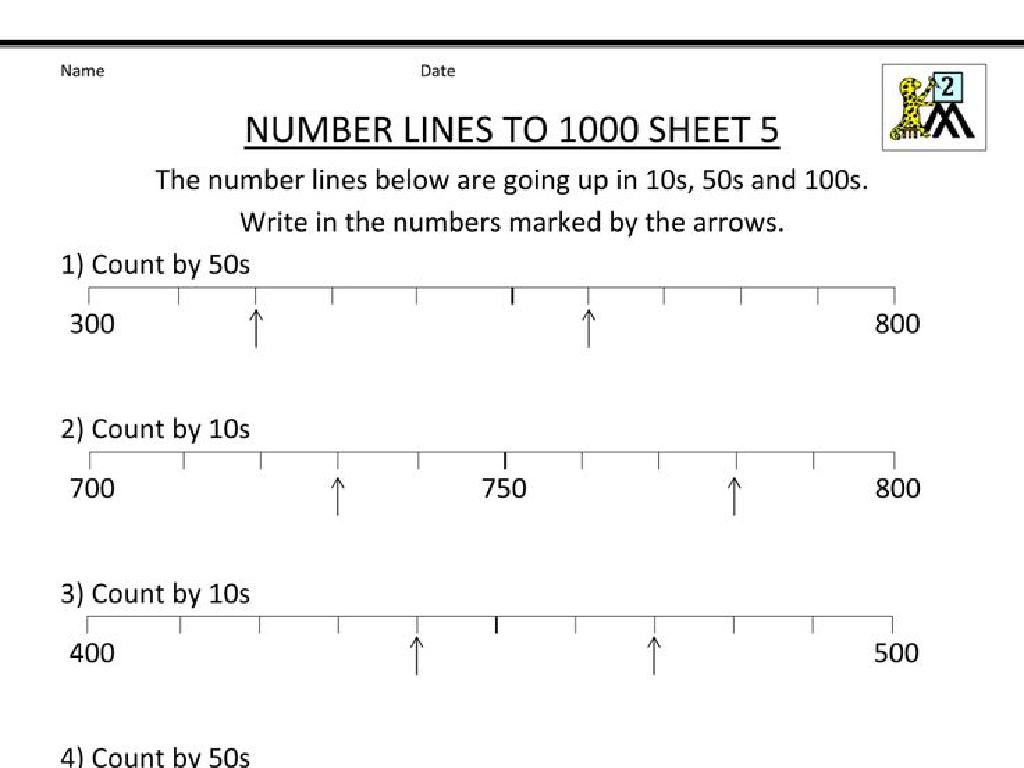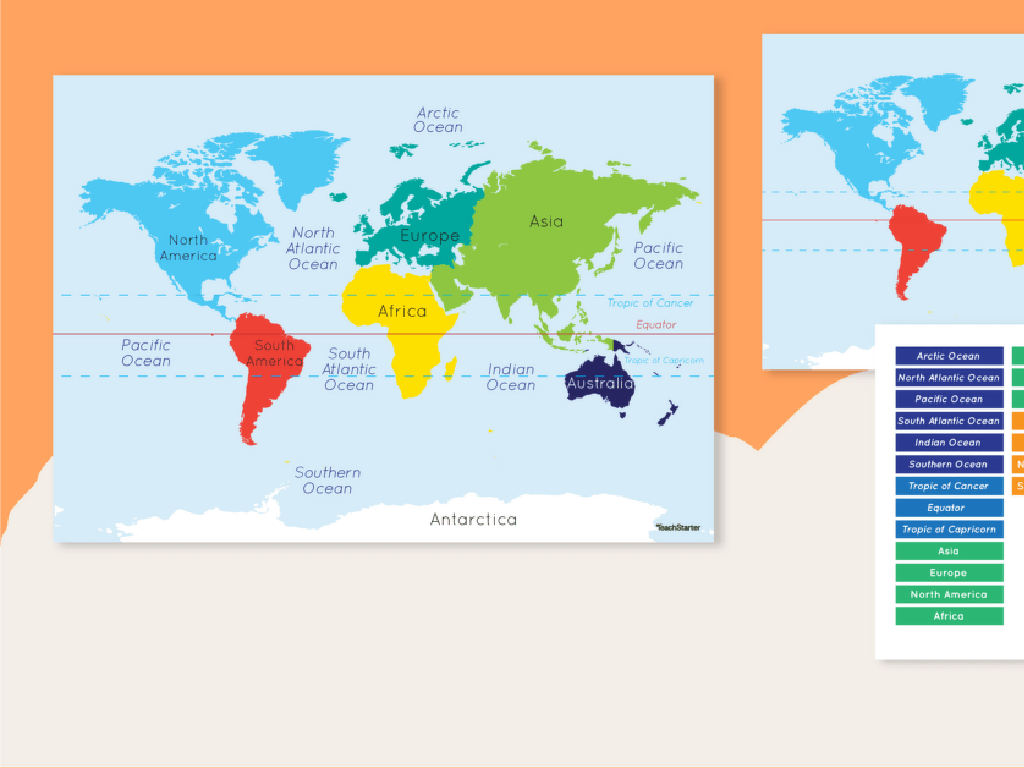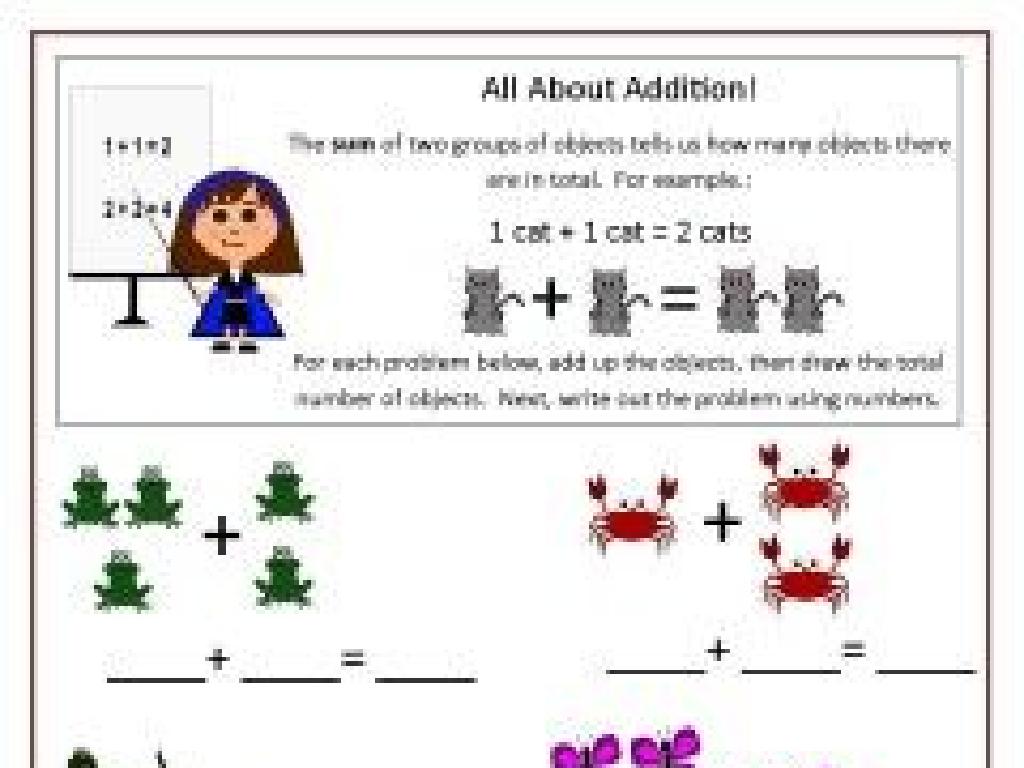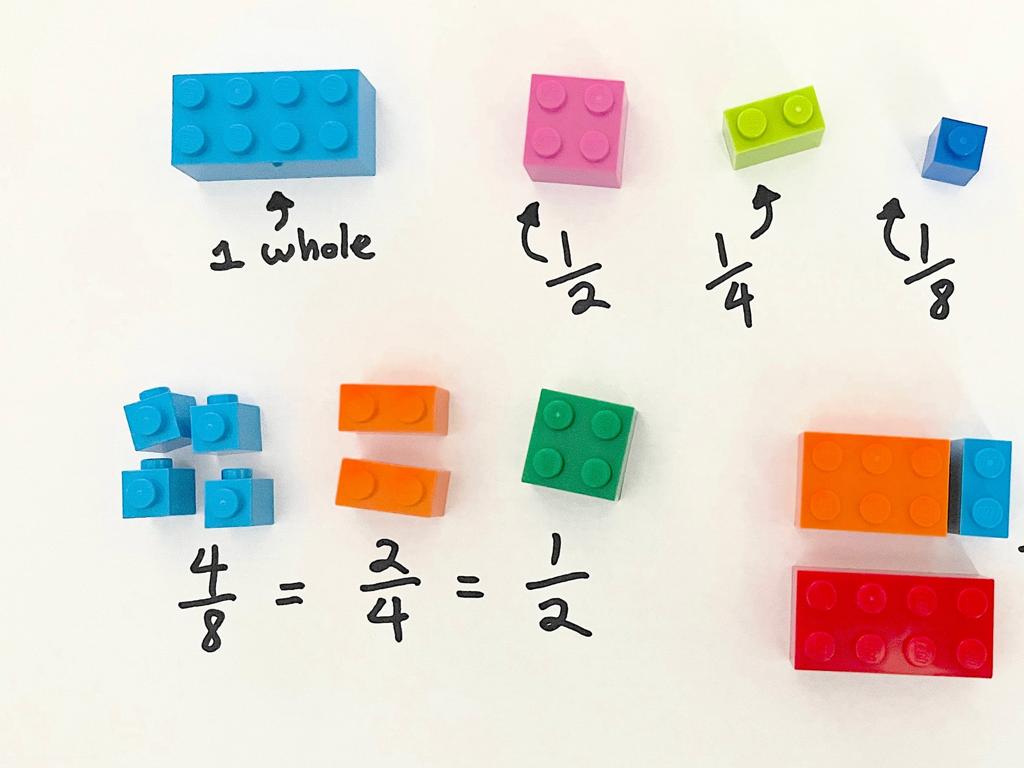Metric Units Of Length: Word Problems
Subject: Math
Grade: Second grade
Topic: Metric Units Of Length
Please LOG IN to download the presentation. Access is available to registered users only.
View More Content
Exploring Metric Units of Length
– Learning to measure length
– Comparing lengths of objects
– Which is longer, a pencil or a shoe?
– Using centimeters and meters
– A small paperclip is about 1 cm, a door is about 1 m
– Solving length word problems
– How many cm in a meter? Let’s find out with examples!
|
This slide introduces second-grade students to the concept of measurement, specifically focusing on metric units of length such as centimeters and meters. Start by explaining that length tells us how long or short an object is. Use everyday objects to help students relate to the concept of length. For instance, a paperclip can represent a centimeter, while a door can represent a meter. Engage the students with simple comparisons to understand which objects are longer or shorter. Introduce word problems that involve adding or comparing lengths, such as ‘If you have a ribbon that is 100 cm, how many meters long is the ribbon?’ This practical approach helps students grasp the concept of measurement and prepares them for solving real-world problems.
Exploring Length Measurement
– Understanding Length
– Length is how long something is end to end.
– Measuring with Rulers
– A ruler is a tool we use to find out length.
– Centimeters and Meters
– Smaller lengths use cm, larger use m.
– Practice Length Problems
– Solve problems using cm and m.
|
This slide introduces the concept of length to second-grade students, explaining it as the measurement from one end of an object to the other. Use everyday examples like measuring height with a ruler to make the concept relatable. Explain that length can be measured in different units, with centimeters for small objects and meters for larger ones. Encourage students to think of items they could measure with a ruler. Prepare to have a variety of rulers available for students to practice measuring items in the classroom and to solve word problems that involve converting between centimeters and meters.
Understanding Centimeters and Meters
– Centimeter: a small unit of length
– A centimeter is tiny, like the width of a pencil.
– 100 centimeters make 1 meter
– If you lay 100 pencils end to end, that’s about 1 meter!
– Meters measure room lengths
– We use meters for bigger things, like how long a room is.
– ‘cm’ and ‘m’ abbreviations
|
This slide introduces the basic units of length in the metric system, centimeters, and meters, to second-grade students. Start by explaining that a centimeter is a small unit of length, which can be related to everyday objects like the width of a pencil. Emphasize that it takes 100 centimeters to equal 1 meter, using a visual example such as laying pencils end to end to illustrate the concept. Explain that meters are used for measuring larger distances, such as the length of a room, and familiarize students with the abbreviations ‘cm’ for centimeters and ‘m’ for meters. Encourage students to measure objects around the classroom using rulers and tape measures to reinforce the concept.
Using a Ruler to Measure Length
– Measuring with a ruler
– Centimeters on a ruler
– Each small mark represents 1 cm
– Lining up objects to measure
– Start at zero, check where the object ends
– Reading the ruler’s measurement
– Find the number at the object’s end for length
|
This slide is designed to teach second-grade students how to use a ruler to measure objects in centimeters. Emphasize the importance of starting at the zero mark on the ruler, not the edge, as some rulers have a small space before zero. Show them how each small mark on the ruler represents one centimeter and how to line up the object with the zero mark. Then, demonstrate how to read the measurement by looking at the number where the other end of the object reaches. Provide several examples with pictures of rulers and objects being measured. Encourage students to practice with rulers in class, measuring various objects, and recording their lengths.
Real-Life Examples of Metric Lengths
– A pencil’s length in cm
– Pencils are usually around 15cm long
– How tall is a door in meters
– A standard door is close to 2m in height
– Classroom measuring activity
– Let’s use rulers to measure items in our room!
|
This slide aims to help students relate to metric units of length through tangible examples. Start by showing them a pencil and explaining that it is approximately 15 centimeters long. Then, compare this to the height of a door, which is about 2 meters tall. Encourage students to visualize the difference between centimeters and meters. For the classroom activity, provide rulers or measuring tapes and have students measure various objects in the classroom. This hands-on experience will reinforce their understanding of metric measurements. Prepare a list of items for students to measure, ensuring they are safe and accessible. Consider pairing students up to foster collaboration.
Solving Length Word Problems
– Adding lengths: pencil and eraser
– If a pencil is 7cm and an eraser is 2cm, what’s their total length?
– Comparing lengths: books on a shelf
– If one book is 30cm and a shelf is 1m, how many books fit?
– Understanding centimeters and meters
– Practice with real objects
– Use items like pencils and books to visualize the problems
|
This slide introduces students to solving word problems involving metric units of length. Start by explaining that centimeters and meters are units used to measure length. Show how to add lengths together using the example of a pencil and an eraser, emphasizing the concept of combining measurements. Then, challenge students to think about space and fitting objects within a given length by comparing the length of books to the length of a shelf. Use classroom objects to demonstrate these concepts for better understanding. For the activity, students can measure items in the classroom and practice calculating combined lengths or the number of items that fit within a certain space. This hands-on approach will help solidify their understanding of metric units of length in a practical context.
Class Activity: Measure and Compare
– Measure items with rulers
– Compare object lengths
– Pair up for word problems
– Use the measurements to solve problems together
– Discuss measurements
– Share how you compared the lengths
|
In this interactive class activity, students will use rulers to measure various objects around the classroom, such as pencils, books, and blocks. They will then compare the lengths of these items to understand the concept of measurement and the use of metric units. Working in pairs, students will help each other solve word problems involving the measurements they’ve taken. This collaborative effort will enhance their problem-solving skills and their ability to communicate mathematical ideas. As a teacher, facilitate the activity by providing guidance on how to use rulers properly and ensure fair pairing. Possible activities for different pairs could include measuring window lengths, the distance between desks, or the height of a chair. Encourage students to discuss their findings and reasoning with the class to foster a collaborative learning environment.
Wrapping Up: Centimeters and Meters
– Congratulations on learning!
– Understanding metric units
– Now you know how to use cm and m to measure length.
– Practice measuring objects
– Try measuring items at home with a ruler or tape measure.
– Keep practicing for perfection
|
Well done to all the students for learning about centimeters and meters! It’s important to understand that these are units we use to measure how long or tall things are. Remember that a centimeter is a small unit and a meter is a larger unit, like the length of a guitar. Encourage the students to practice measuring different items at home to become more familiar with using centimeters and meters. Remind them that the more they practice, the better they’ll get at estimating and measuring lengths. You can suggest that they measure their bed, a book, or even a spoon to start applying what they’ve learned today.






